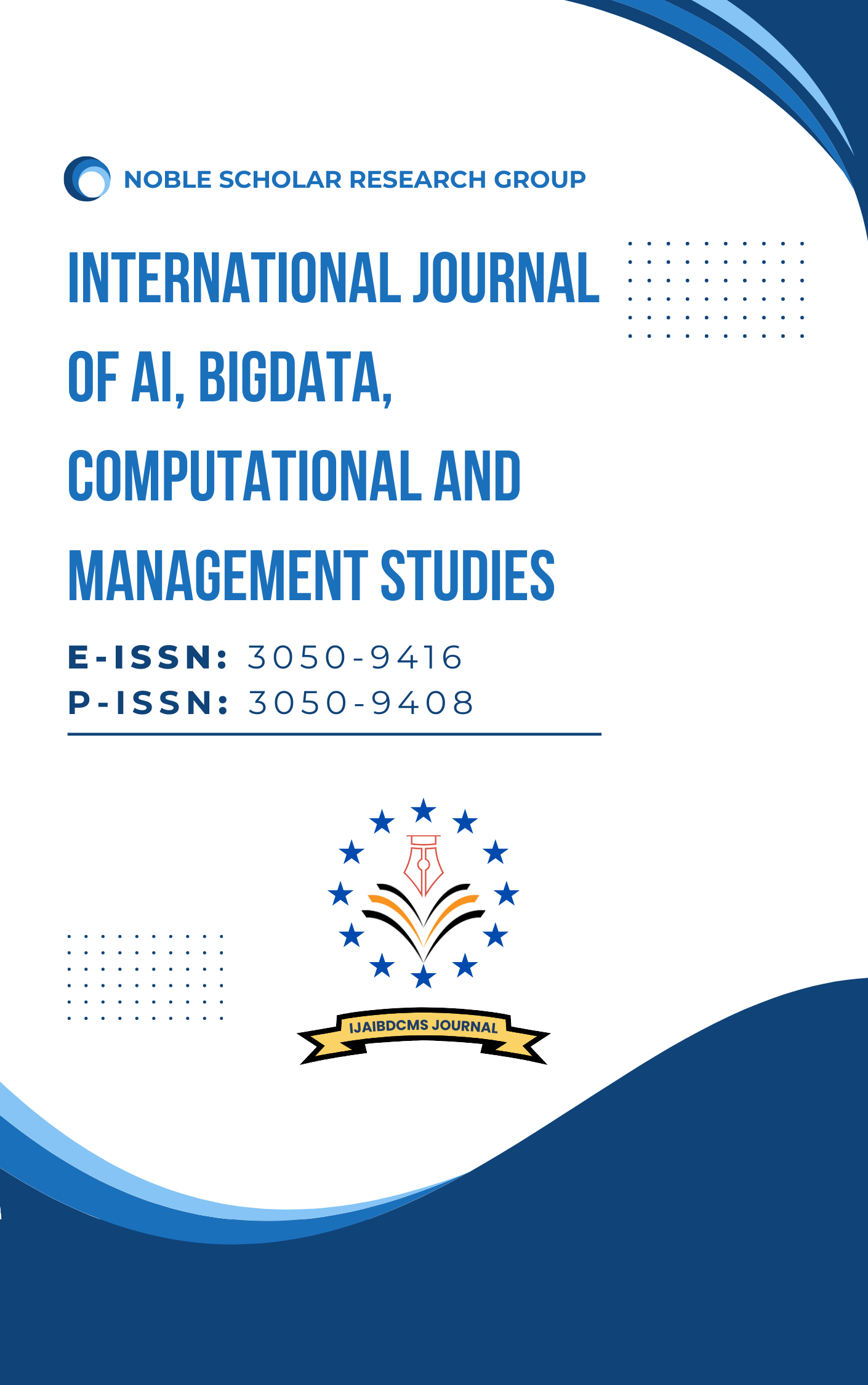Integrating AI with Oracle Fusion ERP for Autonomous Financial Close
DOI:
https://doi.org/10.63282/3050-9416.IJAIBDCMS-V2I2P109Keywords:
Artificial Intelligence, ERP, Oracle Fusion, Financial Close, Machine Learning, Automation, ReconciliationAbstract
Financial close is a crucial but time-consuming part of enterprise financial management, which has long been associated with tedious manual journal entries, an inaccurate reconciliation process, and a resource-consuming audit trail. This paper researches how Artificial Intelligence (AI) and Machine Learning (ML) can be implemented in the Oracle Fusion Cloud ERP to facilitate an autonomous financial close. Oracle Fusion is an automation application that can be based on embedded intelligence and a rules engine to automate major functions, including creating journal entries, intercompany reconciliations, and provisions related to detecting anomalies in financial statements. This paper discusses the system design, automation cues, and data pipeline processes in supporting the AI-based financial package at Oracle. In a process-oriented evaluation of the performance of Oracle Intelligent Financials Model compared to a conventional manual process, we examine how Oracle Intelligent Financials functions. Our empirical evidence suggests that with AI-powered journal automation, predictive reconciliations can reduce close-cycle length by 40 percent, increase compliance accuracy, and enhance audit transparency. In our examination, we also reveal the weaknesses of existing rule-based models, particularly in situations with high variability or non-standard transactions. This paper concludes by highlighting the potential impact of CFOs, auditors, and enterprise IT teams as autonomous financial close systems become intelligent and self-correcting in the contemporary digital enterprise
References
1. Finley, J. R., & Finley, W. E. (2010). Financial Accounting Standards Board Accounting Standards Codification: Implications for Access. Behavioral & Social Sciences Librarian, 29(1), 3-14.
2. Kulikova, L. I., Gubaidullina, A. R., Mukhametzyanov, R. Z., Druzhilovskaya, T. U., & Druzhilovskaya, E. S. (2020). International Financial Reporting Standards (IFRS) regulations for supply chain management. International Journal of Supply Chain Management, 9(4), 570-575.
3. Thakker, T. (2015). Introduction to Oracle Fusion Applications. In Pro Oracle Fusion Applications: Installation and Administration (pp. 3-22). Berkeley, CA: Apress.
4. Jefic, B., & Devost, M. (2009). Transforming your organization using Oracle Fusion–is it worth it? Royal College of Physicians and Surgeons of Canada.
5. Lopes, V., Alexandre, L. A., & Pereira, N. (2019). "Controlling Robots using Artificial Intelligence and a Consortium Blockchain." arXiv preprint arXiv: 1903.00660.
6. Syreyshchikova, N. V., Pimenov, D. Y., Mikolajczyk, T., & Moldovan, L. (2020). Automation of Production Activities of an Industrial Enterprise based on the ERP System. Procedia Manufacturing, 46, 525-532.
7. Nicoletti, B. (2018). Procurement Finance: The Digital Revolution in Commercial Banking. Springer.
8. Sheshasaayee, A., & Bhargavi, K. (2017, February). Design and impact of an ERP and automation model in the administration sectors. In the 2017 International Conference on Innovative Mechanisms for Industry Applications (ICIMIA) (pp. 690-693). IEEE.
9. Janvrin, D., & Mascha, M. F. (2014). The Financial Close Process: Implications for Future Research. International Journal of Accounting Information Systems, 15(4), 381-399.
10. Kwon, D. H., Ahn, T. S., Hwang, I., & Park, J. H. (2017). Fast Close: A case of financial close process automation. The Journal of Small Business Innovation, 20(1), 47-57.
11. Harrist, M. (2020)."How Oracle Teams Shortened The Monthly Financial Close By 20%While Working From Home." Forbes.
12. Giudici, P., Hochreiter, R., Osterrieder, J., Papenbrock, J., & Schwendner, P. (2019). AI and financial technology. Frontiers in Artificial Intelligence, 2, 25.
13. Thakker, T. (2015). Pro Oracle Fusion Applications: Installation and Administration. Apress.
14. Olson, D. L., Johansson, B., & De Carvalho, R. A. (2018). Open source ERP business model framework. Robotics and Computer-Integrated Manufacturing, 50, 30-36.
15. Elbahri, F. M., Al-Sanjary, O. I., Ali, M. A., Naif, Z. A., Ibrahim, O. A., & Mohammed, M. N. (2019, March). Difference comparison of SAP, Oracle, and Microsoft solutions based on cloud ERP systems: A review. In 2019, IEEE 15th International Colloquium on Signal Processing & Its Applications (CSPA) (pp. 65-70). IEEE.
16. Lopes, V., Alexandre, L. A., & Pereira, N. (2019). "Controlling Robots using Artificial Intelligence and a Consortium Blockchain." arXiv preprint arXiv:1903.00660.
17. Kiarie, G. (2006). Perceptions of employees towards automation: A.
18. Das, A., & Rad, P. (2020). Opportunities and challenges in explainable artificial intelligence (XAI): A survey. arXiv preprint arXiv:2006.11371.
19. Chazette, L., & Schneider, K. (2020). Explainability as a Non-Functional Requirement: Challenges and Recommendations. Requirements Engineering, 25(4), 493-514.
20. Akira AI. (2019). "Redefining Enterprise Productivity with Oracle AI Agents." Akira AI.
21. Rusum, G. P., Pappula, K. K., & Anasuri, S. (2020). Constraint Solving at Scale: Optimizing Performance in Complex Parametric Assemblies. International Journal of Emerging Trends in Computer Science and Information Technology, 1(2), 47-55. https://doi.org/10.63282/3050-9246.IJETCSIT-V1I2P106
22. Rahul, N. (2020). Vehicle and Property Loss Assessment with AI: Automating Damage Estimations in Claims. International Journal of Emerging Research in Engineering and Technology, 1(4), 38-46. https://doi.org/10.63282/3050-922X.IJERET-V1I4P105
23. Enjam, G. R., & Chandragowda, S. C. (2020). Role-Based Access and Encryption in Multi-Tenant Insurance Architectures. International Journal of Emerging Trends in Computer Science and Information Technology, 1(4), 58-66. https://doi.org/10.63282/3050-9246.IJETCSIT-V1I4P107



